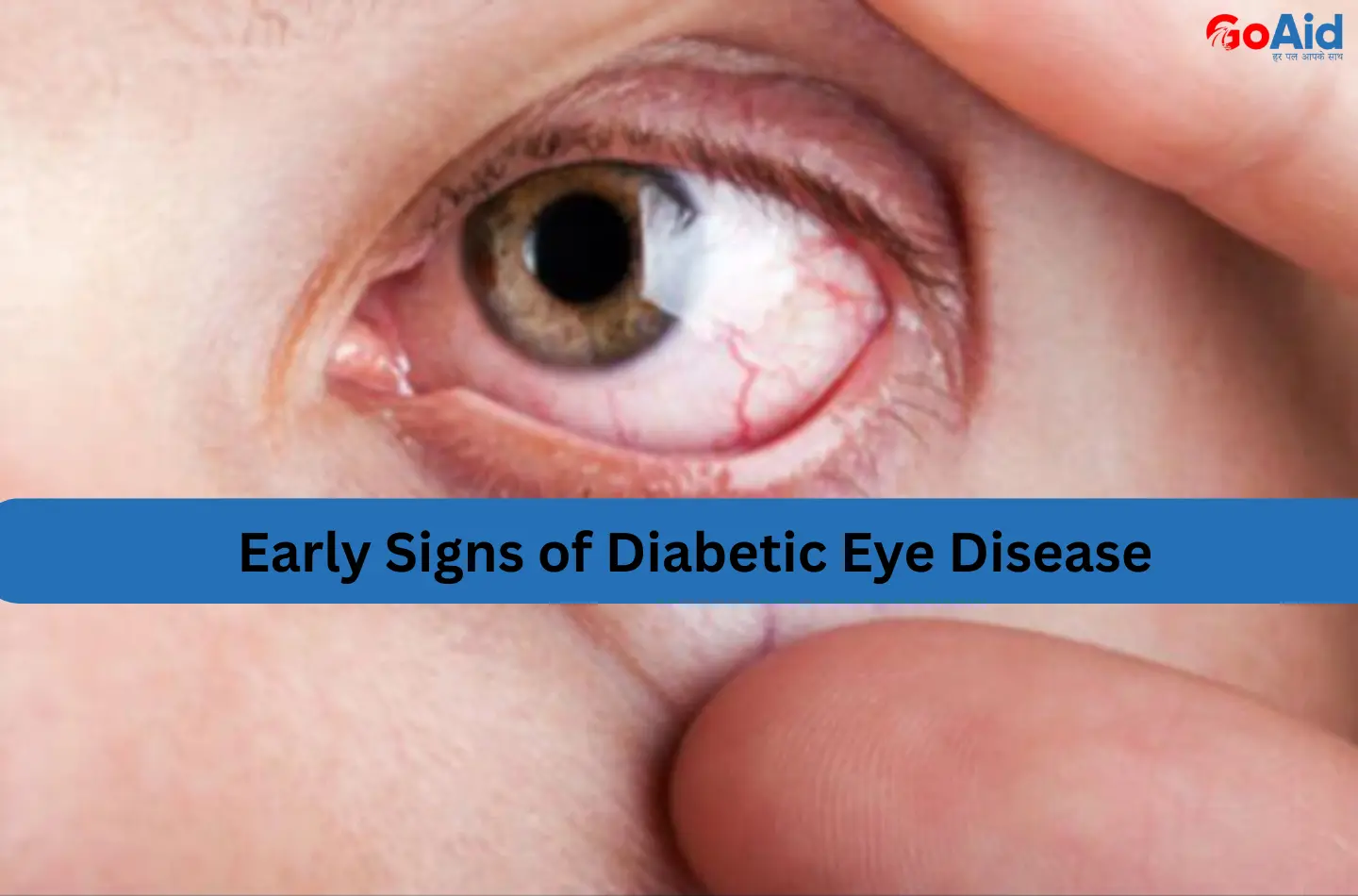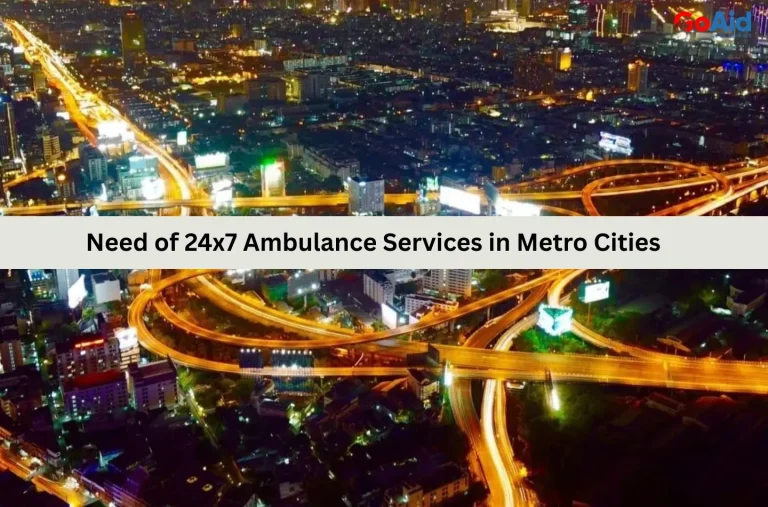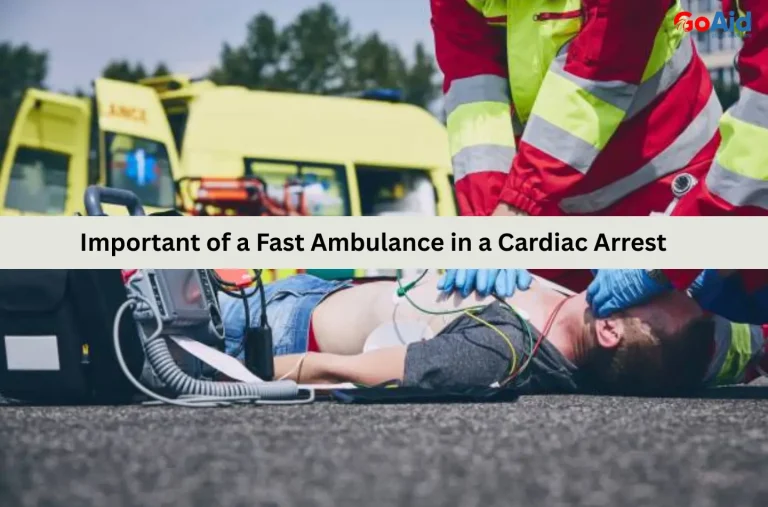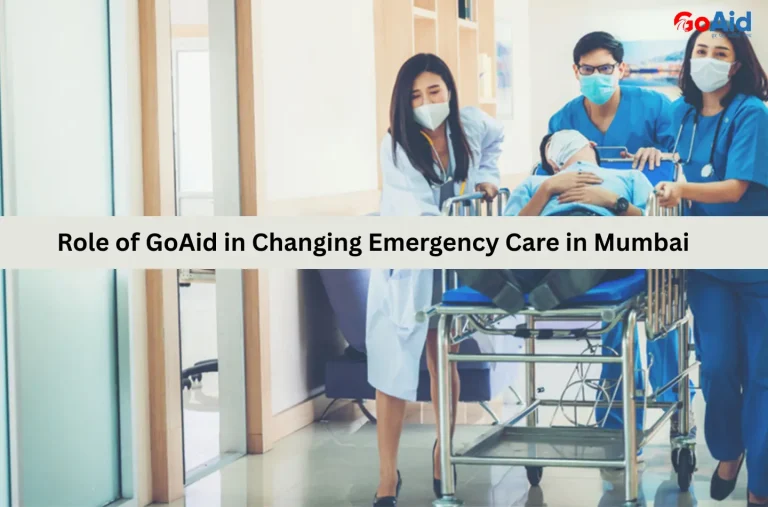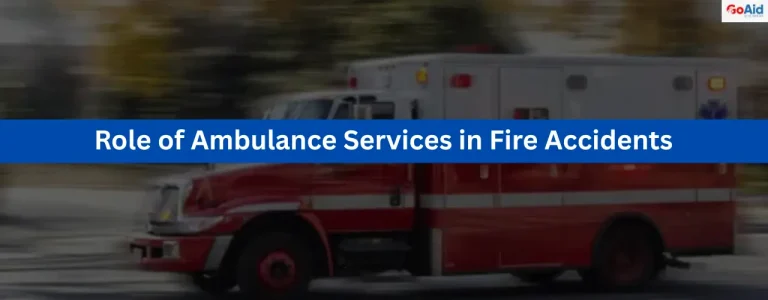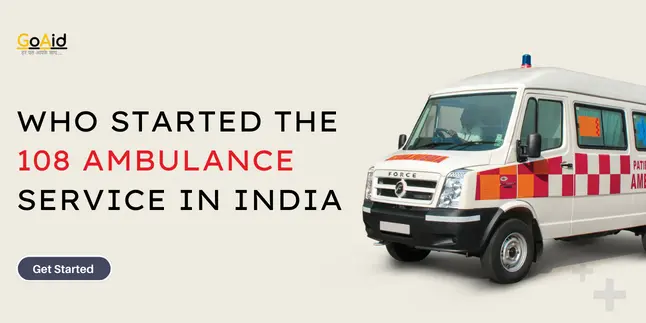Diabetes doesnŌĆÖt just affect blood sugar, it can also silently harm your vision. Diabetic Eye Disease is one of the most common complications among people with long-term diabetes, and it often goes unnoticed until vision loss begins.
The rise in high blood sugar levels can damage the small blood vessels in the retina. This leads to blurred vision, swelling, or even blindness if left untreated. This recognizes the early signs of this disease and seeking timely medical help can make a huge difference in preserving your eyesight.
This is why, in this blog, we have provided you all the details about what diabetic eye disease is, its early warning signs, when to seek emergency help, how GoAid supports diabetic patients, and preventive tips for managing eye health. Are you willing to know about all these points in detail? Then read this blog to the end.
So, letŌĆÖs start ŌĆō
What is Diabetic Eye Disease and How Does It Develop?
What is it?
Diabetic eye disease refers to a group of eye problems caused by diabetes. This includes diabetic retinopathy, cataracts, and glaucoma. It affects the blood vessels, nerves, and other structures of the eye, potentially leading to vision impairment or blindness if not detected and managed early with proper care.
How it Develop?
Diabetic eye disease develops primarily due to prolonged high blood sugar levels that damage the delicate blood vessels in the retina. Over time, these vessels may leak fluid or blood. This leads to swelling, vision distortion, or retinal scarring.
Diabetes can also accelerate cataract formation and increase the risk of glaucoma by affecting intraocular pressure. The longer a person has uncontrolled diabetes, the greater the risk of eye complications.
Early detection through regular eye exams is critical. Timely intervention, proper blood sugar management, and emergency support, such as GoAid Ambulance for Diabetic Patients, can prevent severe vision loss.
Early Signs of Diabetic Eye Disease You Should Watch Out For
Recognizing early symptoms of diabetic eye disease allows for timely intervention. This reduces the risk of permanent vision damage.
1. Blurred Vision:
Frequent blurriness can indicate retinal swelling or fluid leakage caused by diabetes. This requires prompt evaluation and potential Emergency Eye Care Ambulance support.
2. Floaters in Vision:
Seeing dark spots or floating shapes may signal bleeding in the retina, often an early sign of diabetic retinopathy.
3. Difficulty Seeing at Night:
Night vision impairment can occur due to damage to retinal blood vessels. This makes low-light conditions challenging and indicating early eye disease.
4. Sudden Vision Loss:
Unexpected partial or complete vision loss may indicate advanced retinal complications and warrants immediate emergency medical help.
5. Distorted or Wavy Vision:
Straight lines appearing wavy can signal retinal swelling or macular edema, which is common in early diabetic eye disease.
6. Colors Appearing Faded:
Changes in color perception or dimming may result from retinal cell damage and should prompt eye evaluation.
7. Eye Pain or Pressure:
Though less common, discomfort or pressure can be associated with glaucoma or other diabetes-related eye issues.
8. Double Vision:
Experiencing double images may indicate nerve involvement in the eye due to prolonged high blood sugar levels.
9. Frequent Changes in Prescription:
Rapid shifts in vision correction requirements may signal fluctuating blood sugar levels affecting the lens and retina.
10. Swelling Around the Eyes:
Puffiness or edema in and around the eyes may result from fluid retention related to diabetic complications. This requires medical assessment.
Also Read: What is HMPV and Why Should You Care?: Complete Guide
How do untreated Eye Issues Lead to Vision Loss?
Ignoring diabetic eye problems can lead to gradual damage of the retina, nerves, and other ocular structures. This increases the risk of permanent vision loss.
1. High Blood Sugar Damages Retinal Blood Vessels:
Elevated glucose levels weaken and narrow tiny blood vessels. This causes leakage, swelling, or blockage in the retina.
2. Fluid Accumulation in the Retina:
Damaged vessels allow fluid to build up. This leads to retinal swelling and blurred or distorted vision.
3. Retinal Hemorrhage:
Fragile vessels may rupture. This causes bleeding in the retina, which can obstruct vision partially or completely.
4. Formation of Scar Tissue:
Repeated damage and bleeding trigger scar tissue development, which can pull on the retina and lead to retinal detachment.
5. Retinal Detachment:
The retina may peel away from its supportive layer due to traction from scar tissue. This risks permanent blindness if untreated.
6. Macular Edema:
Swelling of the macula, the central part of the retina, leads to vision distortion, color perception issues, and loss of sharp vision.
7. Permanent Vision Loss:
Without timely medical intervention, continuous damage can result in irreversible blindness. This highlights the importance of early detection and GoAid Ambulance for Diabetic Patients support.
Read More: How Pollution Affects Lungs Negatively
When to Seek Emergency Medical Support for Diabetic Eye Disease?
Timely medical help can prevent severe complications and preserve vision for diabetic patients experiencing warning signs.
1. Sudden Vision Loss:
Partial or complete loss of vision in one or both eyes requires immediate GoAid Emergency Medical Help to prevent permanent damage.
2. Persistent Blurred Vision:
Blurriness that does not improve could indicate macular edema or retinal issues, necessitating urgent professional evaluation.
3. Floaters or Dark Spots:
Appearance of new floaters or shadows in vision may signal retinal bleeding or detachment. This requires emergency attention.
4. Distorted or Wavy Vision:
Straight lines appearing bent or wavy can be early signs of retinal swelling needing prompt intervention.
5. Severe Eye Pain or Pressure:
Intense discomfort, pressure, or headaches around the eyes can indicate glaucoma or other urgent diabetic eye complications.
6. Flashes of Light in Vision:
Sudden flashes may indicate retinal tears or detachment, a situation demanding rapid response and professional care.
7. Difficulty with Night Vision:
Trouble seeing in low-light conditions can reflect progressing retinal damage. This requires timely emergency evaluation.
8. Rapid Changes in Vision Prescription:
Frequent and sudden shifts in glasses or contact lens requirements may indicate fluctuating blood sugar affecting eye health.
9. Swelling Around the Eyes or Eyelids:
Edema caused by diabetic complications can signal worsening retinal or vascular problems. This requires immediate assessment.
10. Previous History of Eye Disease with New Symptoms:
Patients with a history of diabetic retinopathy or glaucoma should seek emergency help at any sign of worsening symptoms. This ensures GoAid Ambulance for Diabetic Patients can provide rapid transport and care.
Know More: Connections Between Air Quality & Pregnancy Risks
Role of GoAid Ambulance in Helping in Diabetic Eye Disease
GoAid plays a crucial role in providing timely and specialized emergency support for patients with diabetic eye disease. Their GoAid Ambulance for Diabetic Patients ensures rapid transport to hospitals equipped for eye care.
This reduces the risk of permanent vision damage. Each ambulance is staffed with trained paramedics who can monitor vital signs, manage emergencies related to sudden vision loss, and provide initial stabilization. Patients can book ambulances through the GoAid app or hotline.
This guarantees quick response even in congested city areas. By offering reliable, safe, and fast Emergency Eye Care Ambulance services, GoAid bridges the gap between early symptom detection and professional medical treatment, ultimately protecting vision and improving outcomes for diabetic patients
Tips to Prevent and Manage Diabetic Eye Complications
Proper management and preventive care can significantly reduce the risk of diabetic eye complications and protect long-term vision health.
1. Maintain Blood Sugar Levels:
Keeping blood glucose within recommended ranges reduces damage to retinal blood vessels and lowers the risk of diabetic retinopathy. Regular monitoring and medication adherence are crucial.
2. Control Blood Pressure and Cholesterol:
High blood pressure and cholesterol can worsen eye damage in diabetes. Managing these through diet, exercise, and medications protects retinal health.
3. Schedule Regular Eye Exams:
Comprehensive eye checkups. This includes dilated retinal exams, help detect early changes in the retina and allow timely intervention to prevent vision loss.
4. Monitor Vision Changes Daily:
Keep track of sudden blurriness, floaters, or visual distortions. Early detection and quick action with GoAid Ambulance for Diabetic Patients can prevent worsening complications.
5. Adopt a Healthy Diet:
Consuming antioxidant-rich foods, leafy greens, and omega-3 fatty acids supports eye health and reduces oxidative stress caused by diabetes.
6. Stay Physically Active:
Regular exercise improves blood circulation, helps maintain healthy glucose levels, and reduces the risk of microvascular complications affecting the eyes.
7. Avoid Smoking and Alcohol:
Both smoking and excessive alcohol accelerate vascular damage. This increases the likelihood of diabetic eye disease and worsening existing complications.
8. Protect Eyes from UV Exposure:
Wear sunglasses with UV protection to prevent additional oxidative stress and damage to retinal cells, particularly for outdoor activities.
9. Manage Stress Levels:
High stress can elevate blood sugar and blood pressure, indirectly affecting eye health. Practicing meditation, yoga, or breathing exercises helps maintain stable levels.
10. Seek Immediate Help for Sudden Symptoms:
If experiencing sudden vision changes, floaters, or blurred vision, call GoAid Emergency Medical Help immediately for safe and fast transport to specialized care.
Conclusion
In conclusion, we have provided you all the details about Early Signs of Diabetic Eye Disease: You Should Never Ignore. This recognizes early symptoms. This maintains blood sugar, and following preventive measures are crucial.
GoAid Ambulance for Diabetic Patients ensures timely emergency support. This helps protect vision and improve overall eye health outcomes.

